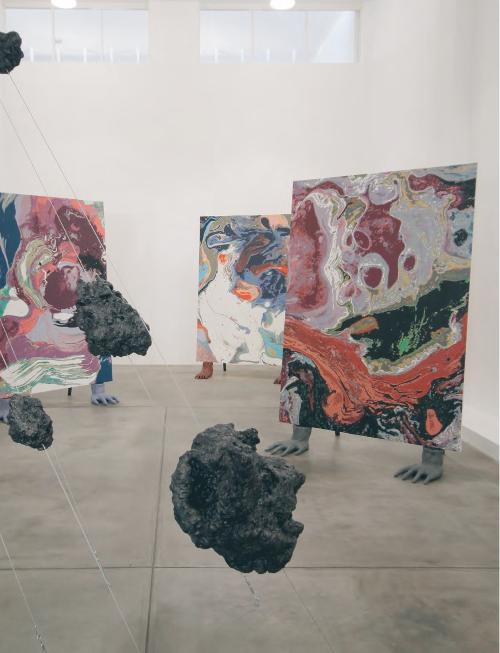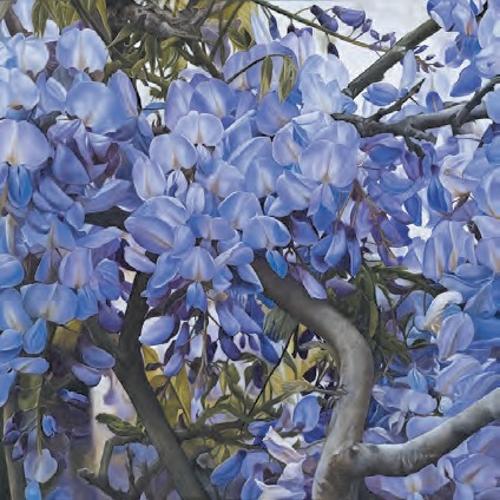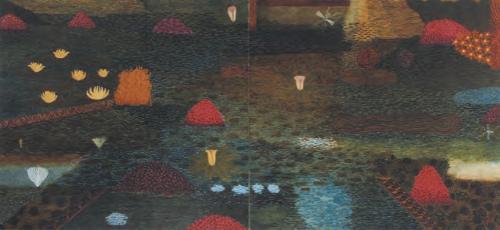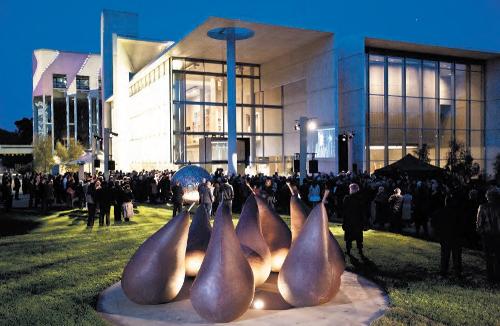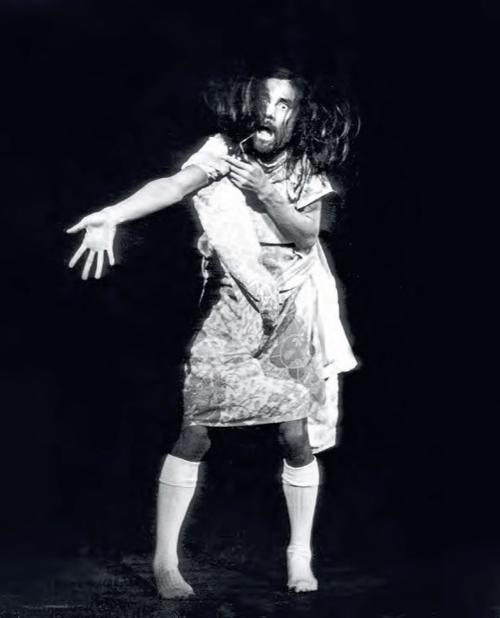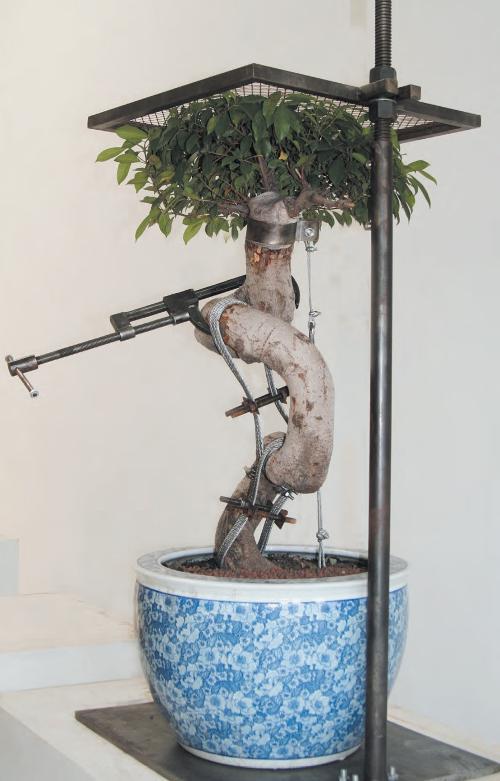
Can art generate legitimate activism about the environment? Can environmental artists create works that embrace the decorative and still convey their protest? This, of course, is not a new question.
'The River Project' is a focused and disciplined exhibition. Campbelltown's Director Lisa Havilah has successfully characterised the area’s local Georges’ River identity while developing a relevant and meaningful relationship with international artists. I am loath to use the word 'interconnectedness’ but it exists in the visual, conceptual and geographical representations of river. If only Lucas Ihlein had been commissioned by Campbelltown rather than the Museum of Contemporary Art to produce 'Environmental Audit'. His spidery annotations take on the appearance of waterways - a perfect fit for 'The River Project'.
'In the Balance' struggles to draw its artists together in such an evocative manner. Curator Rachel Kent relies heavily on artists using novel methods to communicate. When viewed as individual pieces some of these are interesting but they do not work together as a coherent whole so the result is a disjointed experience.
Bonita Ely’s presence in both exhibitions is important. The 'Mildura Sculpture Triennial' in 1975 saw her recognised as one of Australia’s first environmental activist artists for her work on Mount Feathertop and the Murray Darling River. Her 2010 photographs of the Upper Georges River are sublime. The MCA’s re-worked version of her 1979 performance piece 'River Punch' almost feels too dated. However, it does bring attention to the many years that the Murray Darling system has faced crises and that it is currently a hot topic in the local media.
Rubbish has never looked so good with MM Yu’s series of lightboxes. This is a fine example of an artist embracing the decorative and still packing a punch. 'A Few of my Favourite Things' resembles the prizes won in gaming arcades, lit up and bountiful, but you know it’s no good. In comparison, the time taken to listen to every entry of Jeanne van Heeswijk’s 'Talking Trash' at the MCA makes this a poor second.

'2 Degrees', 'Bridge' and 'U-Turn/Restore Respect Waka Project' give a delightful sense of three dimensional space as visitors navigate in and around solid structures. While Campbelltown plays with space in relation to position - up and down, side to side – 'In the Balance' cleverly incorporates the outside and virtual worlds. Artist as Family and Diego Bonetto’s work come into their own when the visitor leaves the gallery and travels to 'Food Forest' and joins walking tours for '5 Terrariums, 5 tours and a world of Facebook friends'.
Artist as Family have created an edible landscape at St Michael’s Church in Surry Hills and as I walk past every day, I watched it grow. Its purpose is to provide an alternative to mainstream popular dependence on supermarkets. That the group made headline news signals the popular desire for a conversation about the environment. Waste is also a key concept that Bonetto explores. He cites the veteran activist artist Ian Millis, who firmly believes that the artist who will really matter in the future will not be producing "useless cargo cult fetish objects...They’ll be adaptively reusing culture and technology, reshaping them into something utilitarian and meaningful".
Both exhibitions successfully include works centred on the creation of dams for the production of electricity. Images from Zhuang Hui and Olegas Truchanas of displaced communities and lost wilderness are moving. The standout work is Jun Nguyen-Hatsushiba’s 'The Ground, the Root, and the Air'; 'The Passing of the Bodhi Tree' which also starred in the last APT. This mesmerising 14 minute video tracks 50 Laotian art students. They travel down the Mekong, their easels set up in the prows of small boats, painting what they see as they go. The great beauty and manifestation of the significance of the Bodhi Tree compels some students to throw themselves into the water and swim towards it. Perhaps nature trumps art as the students abandon their easels. Yet paradoxically, it is through art that Nguyen-Hatsusiba can show us this. It reduced me to tears.
Neither exhibition is a comprehensive example of artists activating their public but rather they are demonstrative of the artist’s responsibility to generate conversation and awareness. For those of you who are in Sydney and clinging to the eastern seaboard, hop onto the M5 and head out. It’s worth it. Who knows, you may make a left turn when joining that bitumen river and head all the way to Canberra to do a spot of environmental activism of your own.




